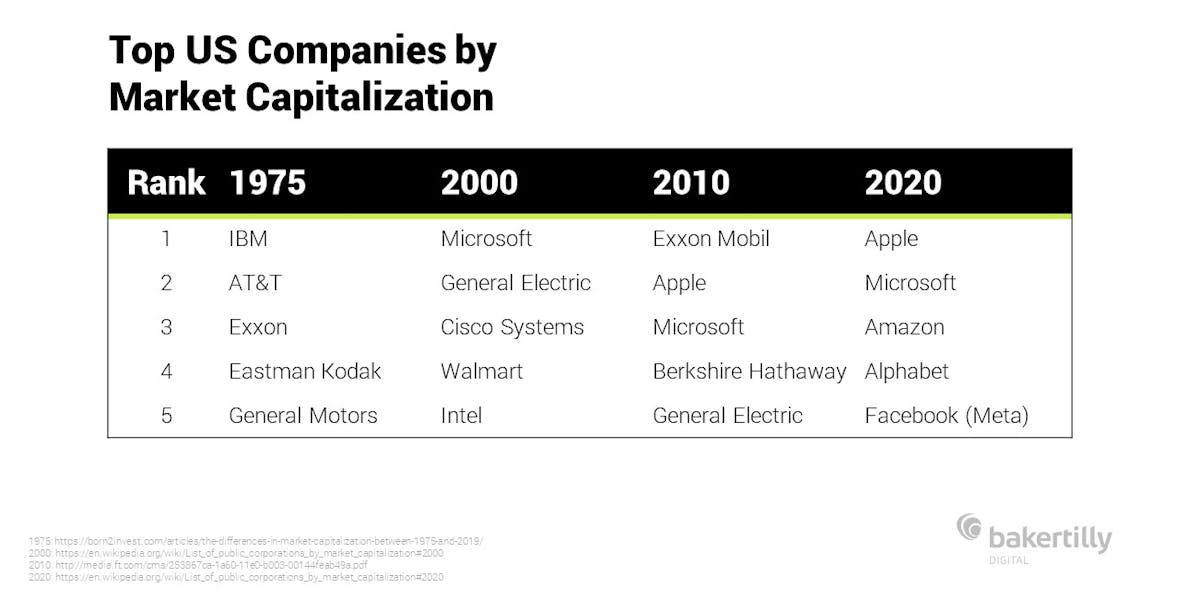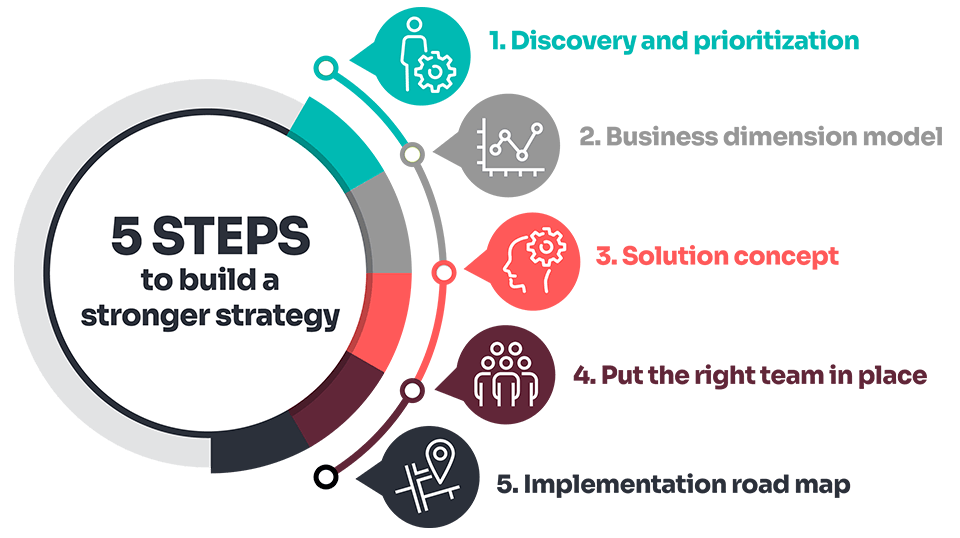
Five steps to consider when building your data strategy
In today’s data driven world, your business needs to treat your data as an asset in order to use it to your advantage. Companies that get better at harnessing their data will see positive transformation in their people, processes and overall business results. Many businesses know that they don’t have the right data in hand to make decisions at a speed that successfully supports and grows the business, but often don’t know where or how to get started. Leveraging your data goes beyond just implementing tools. It’s the journey your business takes to understand what’s important to measure and how you use that information to drive improved decision-making.
Treating data as an asset
Oftentimes, a business will look at a data initiative as a project that occurs at a singular point in time. It’s not. Data needs to be actively managed, governed and taken care of on an ongoing basis. In order to establish a strong data strategy program, you need to fundamentally change the way your company views how it uses data.
There are two types of assets in accounting, tangible and intangible. Tangible assets are physical, such as machinery and plants, and most businesses already have processes in place for these. Intangible assets often include goodwill, intellectual property and trademarks. These elements generally get a lot of attention, funds and care from the organization. Their data, however, often has no position in the notion of intangible assets.
If we take a look at the S&P 500 over the last 45 years, there has been a significant shift in the organizations that had their values derived from tangible assets to intangible assets. Most of the assets in 1975 were in property, equipment and physical things. Conversely, by 2020, the top five largest U.S. based companies were all tech related companies, that could attribute a large percentage of their value to their intangible assets.

These companies’ growth and success would not have had the same trajectory without their intangible assets. They were able to take the data that they’ve collected and housed and determine the best ways to leverage it to create better experiences for their customers.
Data strategy and program execution
Once your company has made the shift to thinking about data as an asset, then you will be set up to properly define your data strategy program. Data strategy is about building a strong and lasting capability within the business. Knowing what to measure, having processes in place for measuring efficiently at scale, organizing the right people and implementing the right tools and technology are all pivotal to designing an effective data strategy.
Our five steps to build a stronger data strategy include:

- 1. Discovery and prioritization
- 2. Business dimension model
- 3. Solution concept
- 4. Put the right team in place
- 5. Implementation road map
Step 1
Formulate your team for discovery and prioritization
First, we interview stakeholders across sales, marketing, finance and other key functional areas within the company to better understand how your organization operates currently and then audit your existing materials to help prioritize the questions you would like your data to help answer. Once these questions are established, we organize and aggregate them into themes and score them by business value against the feasibility of being able to measure each theme.
Step 2
Develop your business dimension model
Next, we use the input from stakeholder conversations to develop a business analytical model that matches your needs. This model helps drive a shared understanding of the metrics and business functions that drive your overall objectives. It is a key starting point for developing a single source of truth in your analytical environment.
Step 3
Build your solution into a concept
We then work with your business leads to design a conceptual architecture based on the data domains we prioritized in the last step. After analyzing what your technology environment can handle, we establish how the data can be ingested, organized, connected and visualized. This helps determine the right tools that need to be put in place, taking into account your company’s available talent for being able to manage and implement the established program.
Step 4
Evaluate the job roles of your team
As your business becomes more sophisticated in understanding and using its data, it will need to fill new roles from inside and outside the business. Each of these roles will be necessary for your business to use its data successfully. These roles include:
- Executive sponsor/steering committee
- Program manager
- Project manager
- Data architect
- Business analyst
- Data engineer
- Data analyst
- Data scientist
One person might fulfill one or more of the roles above in a part-time way until your business’s data analytics maturity reaches a state that demands full-time coverage. No one individual is going to contain all these skills at a high level. In early phases, it will be necessary to supplement existing teams with outside resources to accelerate maturity. We help ensure you have the people and processes in place that your company needs to make your solution concept successful.
Learn more about these roles and how they are defined in our e-book.
Step 5
Implement your new foundational road map
With our solution concept(s) and newly defined team in place, we create a two- to three-year road map that details the foundational elements needed to stand up the capabilities internally, data domains your business should address and how to time the implementation of each step.
How we can help
If you’re ready to build a stronger data strategy, Baker Tilly can help you effectively tap into and capitalize on the intangible value of using data as an asset. Once that change has been established, we work with your stakeholders to determine the best data strategy program and steps for execution. Companies who create a shared language and understanding around their data will know what the key indicators are, what they mean and why they're important to the business. Successful continuous integration and deployment happens when a company can easily roll out new data analytics tools over time, a continuous flow of code and successful projects that it can leverage throughout the business.
